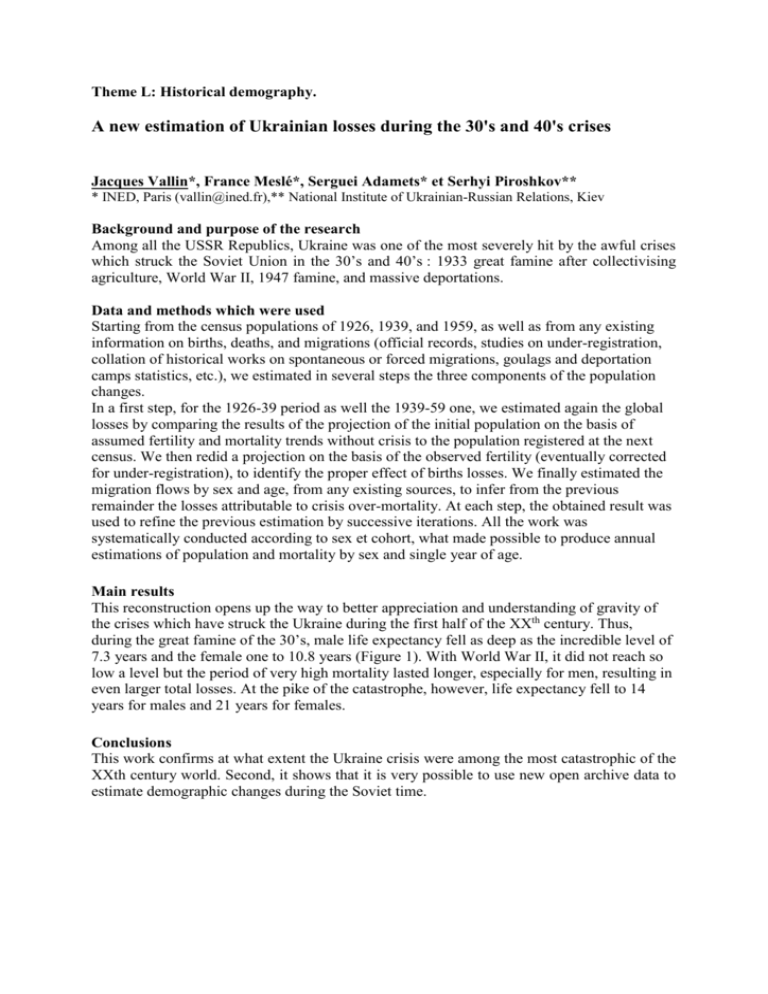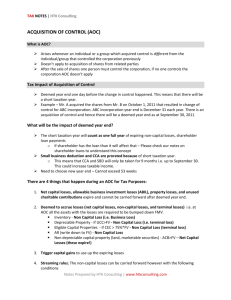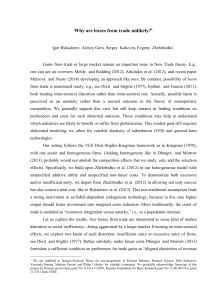Jacques Vallin*, France Meslй*, Serguei Adamets* et Serhyi Piroshkov
advertisement

Theme L: Historical demography. A new estimation of Ukrainian losses during the 30's and 40's crises Jacques Vallin*, France Meslé*, Serguei Adamets* et Serhyi Piroshkov** * INED, Paris (vallin@ined.fr),** National Institute of Ukrainian-Russian Relations, Kiev Background and purpose of the research Among all the USSR Republics, Ukraine was one of the most severely hit by the awful crises which struck the Soviet Union in the 30’s and 40’s : 1933 great famine after collectivising agriculture, World War II, 1947 famine, and massive deportations. Data and methods which were used Starting from the census populations of 1926, 1939, and 1959, as well as from any existing information on births, deaths, and migrations (official records, studies on under-registration, collation of historical works on spontaneous or forced migrations, goulags and deportation camps statistics, etc.), we estimated in several steps the three components of the population changes. In a first step, for the 1926-39 period as well the 1939-59 one, we estimated again the global losses by comparing the results of the projection of the initial population on the basis of assumed fertility and mortality trends without crisis to the population registered at the next census. We then redid a projection on the basis of the observed fertility (eventually corrected for under-registration), to identify the proper effect of births losses. We finally estimated the migration flows by sex and age, from any existing sources, to infer from the previous remainder the losses attributable to crisis over-mortality. At each step, the obtained result was used to refine the previous estimation by successive iterations. All the work was systematically conducted according to sex et cohort, what made possible to produce annual estimations of population and mortality by sex and single year of age. Main results This reconstruction opens up the way to better appreciation and understanding of gravity of the crises which have struck the Ukraine during the first half of the XXth century. Thus, during the great famine of the 30’s, male life expectancy fell as deep as the incredible level of 7.3 years and the female one to 10.8 years (Figure 1). With World War II, it did not reach so low a level but the period of very high mortality lasted longer, especially for men, resulting in even larger total losses. At the pike of the catastrophe, however, life expectancy fell to 14 years for males and 21 years for females. Conclusions This work confirms at what extent the Ukraine crisis were among the most catastrophic of the XXth century world. Second, it shows that it is very possible to use new open archive data to estimate demographic changes during the Soviet time.











